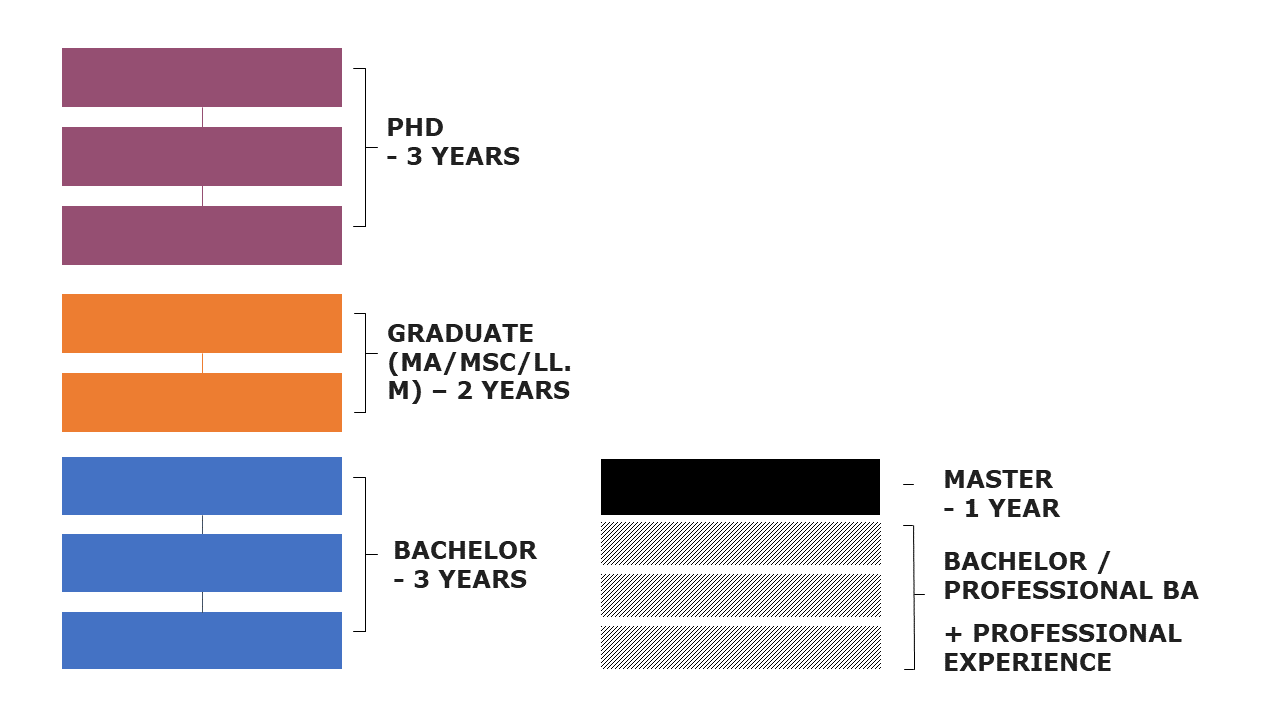Study structure
The study structure at the University of Copenhagen is divided into three levels and follows a 3+2+3 structure. Three years of undergraduate studies lead to a bachelor’s degree and an additional two years lead to a master’s degree.
Only a few degrees differ from this model. A master's degree obtained from UCPH can be extended with three more years of postgraduate work leading to a PhD degree.
Structure of education
3 + 2 + 3 structure

At UCPH, you will experience many different types of teaching during your studies.
Each programme consists of a mix of lectures and tutorials. Some include student presentations and project-based work, and many programmes also have practical assignments as well as lab and fieldwork.
Students are assessed after taking one of the following types of examinations: exam paper, written on-site exam, oral exam or active participation. In addition, some courses may require the successful completion of written, oral or practical assignments during the course.
The academic calendar is divided into two semesters: autumn semester (September to January) and spring semester (February to June).
Faculties and programmes use the semester structure except for:
Faculty of Science
Faculty of Health and Medical Sciences
School of Veterinary Medicine and Animal Science
School of Pharmaceutical Science
The Master’s programme in Global Health.
Here, the courses are organised in a block structure, dividing the academic year (60 ECTS) into four nine-week blocks.

Credit system
UCPH uses the European Credit Transfer System (ECTS) which defines a full study load for one year as 60 ECTS. The number of credits awarded for each course varies depending on the workload. Find out more about the Danish credit system.
Academic year 2023/2024
The dates below give an overall view of the academic calendar (autumn and spring semester) at UCPH. Please contact the individual departments to confirm their specific teaching schedules.
Spring semester: 1 February 2023 – 30 June 2023
(classes typically end in May/early June)
Autumn semester: 1 September 2023 – 31 January 2024
(classes typically end in December)
- Academic calendar of the Faculty of Science.
- Academic calendar of the Faculty of Health and Medical Sciences, the School of Veterinary Medicine and Animal Science, the School of Pharmaceutical Sciences and the Master’s programme in Global Health: Please write to exchange@sund.ku.dk.
Public holidays in study year 2023/2024
• Easter Break: 3 April - 10 April 2023 (both days included)
• General Prayer Day: 5 May 2023
• Ascension Day: 18 May 2023
• White Monday: 29 May 2023
• Constitution Day: 5 June 2023
• Autumn holiday: Monday 16 October - Friday 20 October 2023 (week 42)
• Christmas break: 23 December 2023 - 5 February 2024
